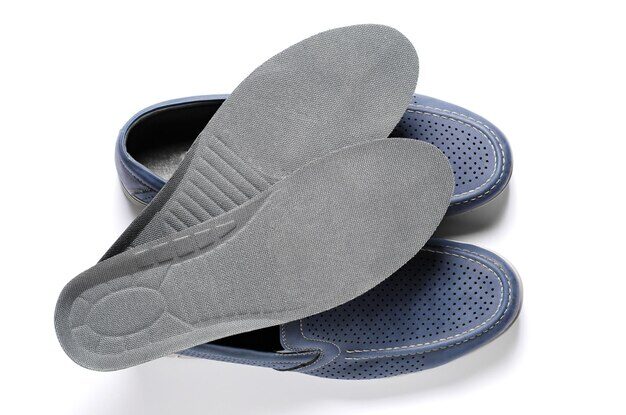Insoles, also known as shoe inserts or footbeds, are an essential component of footwear designed to provide cushioning, support, and comfort. Whether you use them for added arch support, shock absorption, or to alleviate foot pain, understanding the lifespan of insoles is crucial for maintaining optimal foot health and footwear performance. In this comprehensive guide, we’ll explore the factors that influence the longevity of insoles and provide tips for determining when it’s time to replace them.

Factors Influencing Insole Longevity
Several factors can affect how long insoles last, including:
1. Material Quality:
- The quality of materials used in the construction of insoles plays a significant role in their durability. High-quality materials such as memory foam, gel inserts, or orthotic-grade materials tend to last longer than cheaper alternatives.
2. Frequency of Use:
- The more frequently you wear shoes with insoles, the faster they will wear out. Insoles subjected to daily use will typically wear out more quickly than those worn occasionally.
3. Type of Activity:
- The type of activity you engage in while wearing insoles can impact their lifespan. Activities that involve high-impact movements, such as running or jumping, can cause insoles to deteriorate faster than low-impact activities like walking.
4. Body Weight:
- Heavier individuals may put more pressure on insoles, leading to faster wear and tear compared to lighter individuals.
5. Maintenance:
- Proper maintenance, including regular cleaning and airing out, can help extend the lifespan of insoles. Neglecting to clean insoles can lead to the buildup of odor-causing bacteria and reduce their effectiveness.
Signs That Insoles Need Replacing
While the lifespan of insoles can vary depending on the factors mentioned above, there are several common signs that indicate it’s time to replace them:
1. Reduced Cushioning:
- If you notice that your insoles have lost their cushioning or no longer provide adequate support, it’s a sign that they need replacing. Flat or compressed areas indicate that the insoles are no longer effectively absorbing shock.
2. Visible Wear and Tear:
- Inspect the surface of the insoles for signs of wear and tear, such as cracks, holes, or fraying edges. These physical signs indicate that the structural integrity of the insoles has been compromised.
3. Lingering Foot Discomfort:
- If you experience persistent foot pain, discomfort, or fatigue, even when wearing insoles, it may be a sign that they are no longer providing adequate support. In some cases, worn-out insoles can exacerbate existing foot conditions or lead to new ones.
4. Odor and Hygiene Issues:
- Insoles that develop a persistent odor or become discolored due to sweat and bacteria buildup may need replacing, even if they appear structurally intact. Foul odors indicate the presence of bacteria that can compromise foot hygiene and lead to foot odor and infections.
Extending the Lifespan of Insoles
While insoles will eventually wear out with use, there are steps you can take to prolong their lifespan:
- Rotate Insoles: Rotate between multiple pairs of insoles to distribute wear and allow them to air out between uses.
- Clean Regularly: Clean insoles regularly with mild soap and water to remove dirt, sweat, and bacteria buildup.
- Air Out Shoes: Allow shoes and insoles to air out between wears to prevent moisture buildup and bacterial growth.
- Replace When Necessary: Monitor the condition of your insoles and replace them at the first signs of wear or discomfort.
Conclusion
Insoles are an essential component of footwear that contribute to comfort, support, and overall foot health. Understanding the factors that influence the lifespan of insoles and recognizing the signs that indicate they need replacing is essential for maintaining optimal foot comfort and preventing foot-related problems. By following proper maintenance practices and replacing insoles as needed, you can ensure that your footwear continues to provide the support and cushioning your feet need.
Also read: How to Wash Shoe Insoles?

